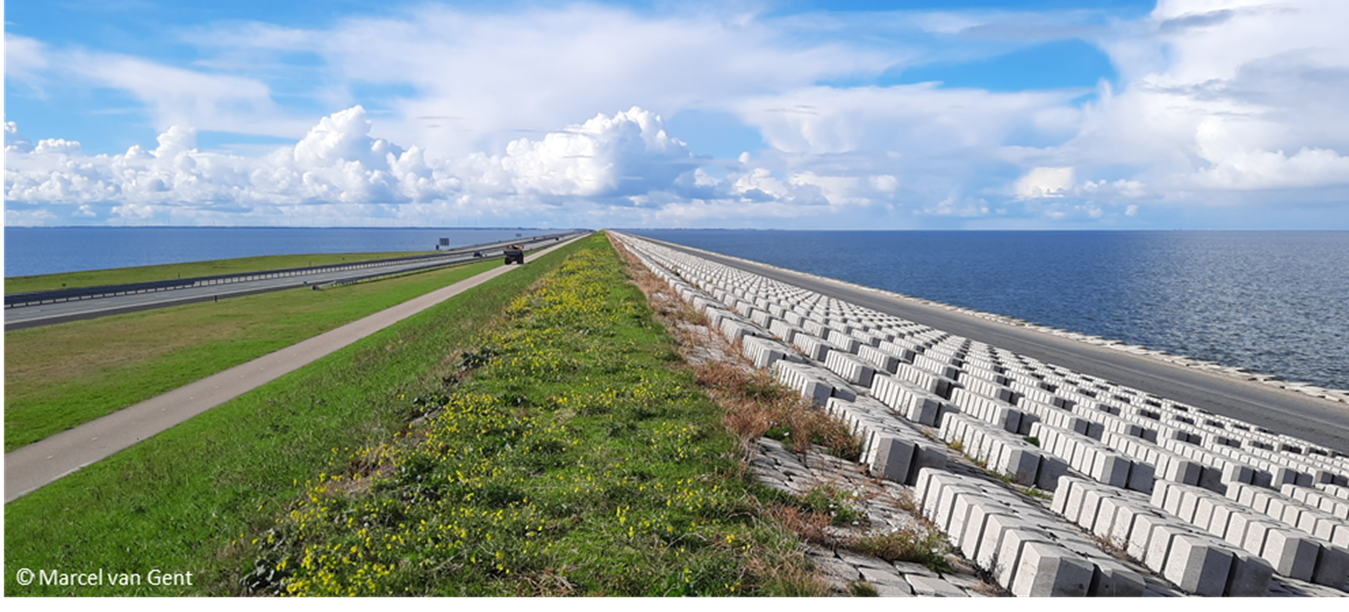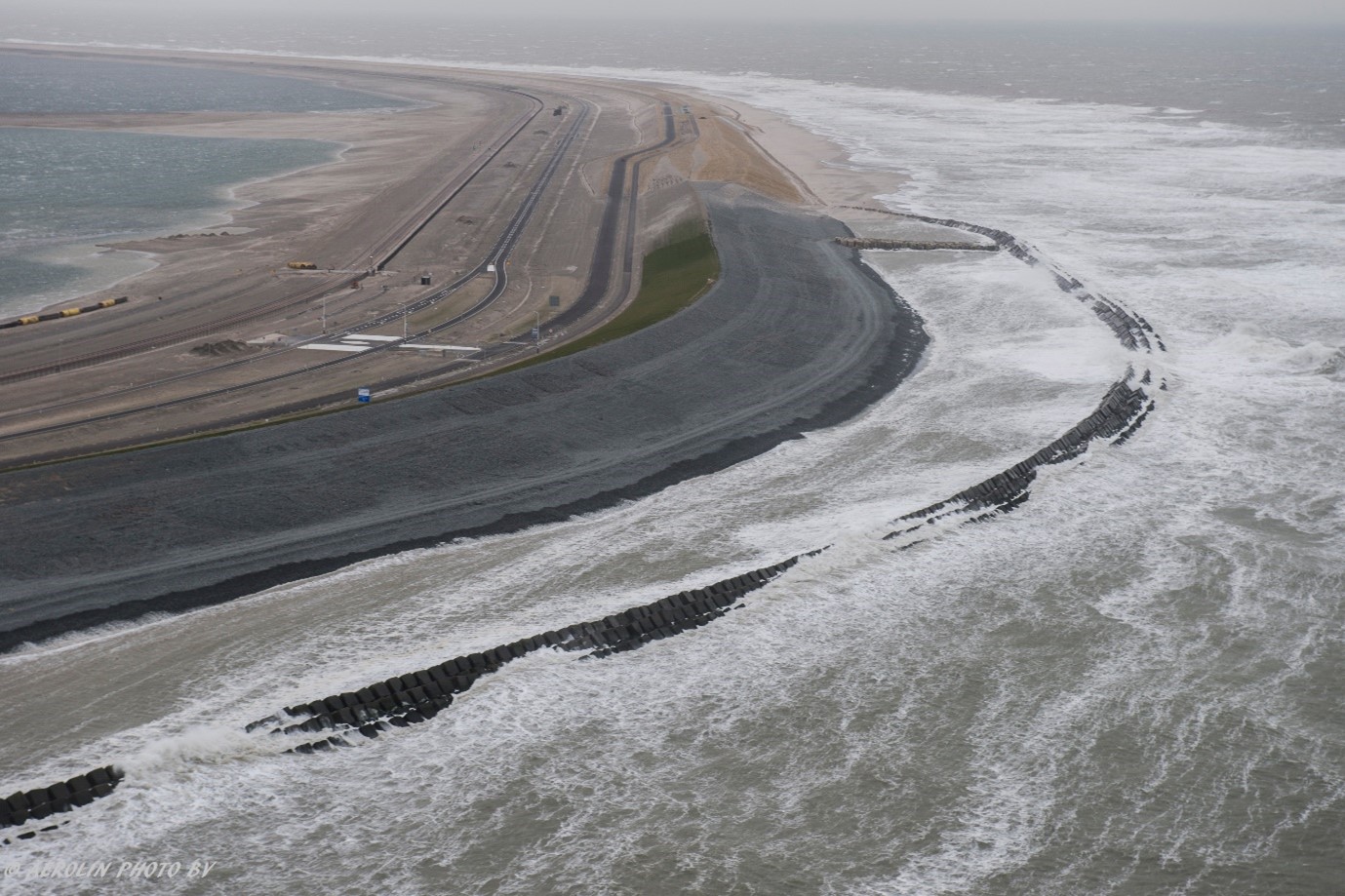Coastal Structures
Coastal structures such as breakwaters, jetties, dikes, flood barriers, closure dams, wind farms in the coastal zone, bed and scour protection, as well as revetments along shorelines are essential to protect people, properties and activities along the coast and in ports. Coastal structures often experience severe wave loading during storms. Reliable and economic design, construction and maintenance of these coastal structures are of course essential.
The field of coastal structures is facing major challenges, including the development of climate adaptive coastal structures, to anticipate for future sea level rise and wave climate change in coastal regions. The interaction between coastal infrastructure and the dynamic environment is essential. Awareness of coastal structures as part of the ecosystem in coastal zones offers opportunities to protect people and activities while stimulating nature and utilizing natural processes. Optimizing the design and maintenance of coastal infrastructure using sustainable materials, natural processes and life-cycle approaches is part of our activities.
This research group studies and teaches the interaction between water motion (by waves and currents) and coastal infrastructure. The goal is to increase the understanding of the physical processes and to translate them to design requirements for the protection of people, properties and activities along the coast and in ports. Often, use is made of modelling in hydraulic facilities (wave flumes and wave basins), numerical modelling, and data-driven methods (e.g. A.I. methods).
Research focusses on improvement of coastal structures to make them more reliable, more economic, more environmentally friendly, climate adaptive and multi-functional.

